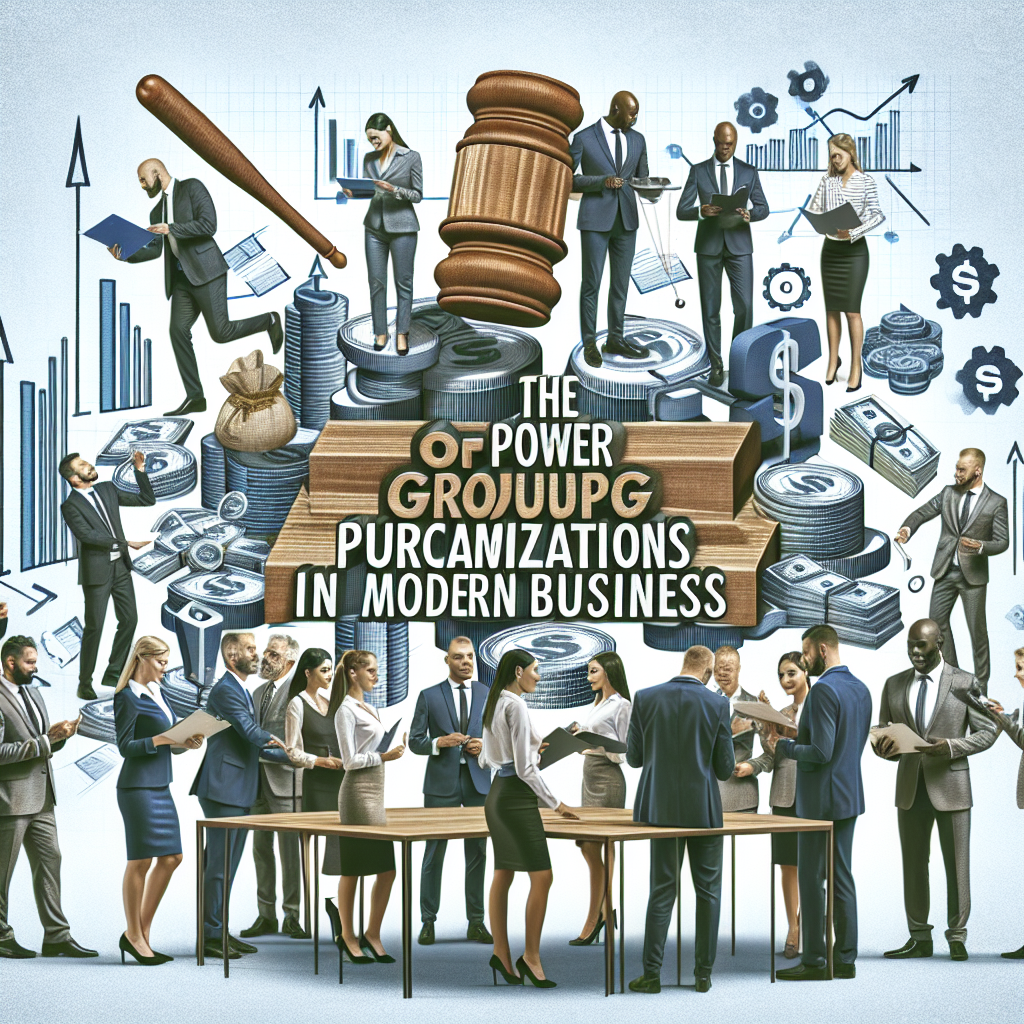Introduction
Effective procurement is crucial for the success of organizations. It directly affects cost management, supplier relationships, and overall operational efficiency. By implementing corporate procurement best practices, organizations can turn their procurement strategies into powerful tools for achieving business goals.
These best practices not only optimize processes but also reduce costs. Streamlined workflows lead to faster decision-making and improved productivity, while strategic sourcing and negotiation can significantly lower expenses while maintaining quality.
Moreover, by aligning procurement with organizational goals, you create a framework that not only meets current needs but also anticipates future demands. Understanding and implementing these practices is essential for any organization aiming to enhance its procurement function.
For instance, effective procurement strategies can help nonprofits maximize federal grant funding. Additionally, it’s important to consider how purchasing decisions impact employee morale, especially when it comes to providing necessary resources like break room supplies.
In industries such as healthcare where essential PPE for airborne precautions is critical, understanding the intricacies of procurement becomes even more vital. Furthermore, debunking common myths about Group Purchasing Organizations (GPOs) can assist in making informed purchasing decisions.
Lastly, the journey of learning and transformation in procurement can be illustrated through the experiences of individuals like Frank Corris, who emphasizes the importance of continuous learning and strategic thinking in driving procurement success. His story is a testament to the fact that mastering procurement requires a commitment to lifelong learning.
1. Strategic Planning in Procurement
Strategic planning in procurement refers to the process of aligning purchasing decisions with an organization’s long-term objectives. This approach ensures that procurement activities not only meet immediate needs but also support broader business goals.
Key Aspects of Strategic Planning
1. Definition
It involves assessing current procurement practices, identifying opportunities for improvement, and establishing clear objectives that guide sourcing decisions. For instance, understanding the difference between strategic sourcing and category management can significantly enhance sourcing decisions.
2. Importance of Alignment
Aligning procurement strategy with organizational goals enhances efficiency and effectiveness. Benefits include:
- Improved resource allocation
- Enhanced supplier selection processes
- Increased cost savings
- Greater adaptability to market changes
Organizations that integrate their procurement strategy with overall business objectives tend to experience better outcomes. By focusing on the alignment of these strategies, you can ensure that every purchasing decision contributes positively to the company’s mission and vision. This proactive approach fosters a culture of collaboration between departments, driving innovation and continuous improvement in procurement practices.
Moreover, leveraging the best procurement software and outsourcing companies can revolutionize your procurement strategy, making it more efficient and effective.
Taking the time to develop a strategic plan for procurement not only positions your organization for success but also builds a foundation for sustainable growth and competitive advantage in the marketplace. However, it’s also crucial to be prepared for unexpected challenges. Developing a resilient procurement strategy that can withstand crises is essential for long-term success.
Ultimately, whether you’re just starting out in this field with entry-level procurement jobs or are a seasoned professional, understanding and implementing effective strategic planning in procurement is key to achieving organizational success.
2. Leveraging Technology for Efficiency
Technology plays a crucial role in modern procurement processes, transforming how organizations manage their sourcing activities. The integration of technology into procurement enables streamlined operations, improved accuracy, and enhanced collaboration among various stakeholders.
Key Advantages of Cloud-Based Procurement Software
- Real-Time Visibility: Cloud-based procurement software provides immediate access to data and analytics, allowing teams to make informed decisions swiftly. Having real-time visibility into inventory levels, spending patterns, and supplier performance is essential for optimizing procurement strategies.
- Improved Communication: These platforms facilitate seamless communication among internal teams and suppliers. By centralizing information, stakeholders can easily share updates, track orders, and address issues promptly.
- Enhanced Efficiency: Automating routine tasks such as order processing and invoice approvals reduces manual errors and frees up valuable time for procurement professionals to focus on strategic initiatives.
Investing in cloud-based solutions not only boosts operational efficiency but also supports organizational agility. Adapting quickly to market changes becomes feasible when your procurement team has the tools necessary to respond in real time. This technological shift paves the way for more effective supplier management and cost savings that directly impact the bottom line.
Moreover, leveraging drastic cost reduction through collective spend can significantly enhance these benefits. By pooling resources and negotiating collectively, organizations can achieve substantial savings while also fostering diversity, equity, and inclusion in the workplace.
Additionally, staying ahead of the curve by understanding the top trends in supplier innovation is vital for any procurement team aiming for success. These insights can help unlock exclusive membership benefits which can further streamline operations (unlock exclusive membership benefits today). For any inquiries or further information regarding our services or membership benefits, feel free to contact us.
3. Developing Strong Supplier Relationships
Building and maintaining strong relationships with suppliers is crucial for long-term success in corporate procurement. Effective supplier partnerships management enhances collaboration, fosters trust, and leads to better outcomes for all parties involved.
Key Practices for Strong Supplier Relationships
- Regular Evaluations: Implement periodic assessments of supplier performance against agreed-upon metrics such as delivery timeliness and quality. This practice ensures alignment with organizational goals and allows for proactive adjustments.
- Feedback Loops: Establish consistent channels for communication. Providing constructive feedback helps suppliers understand your expectations and areas for improvement.
- Collaborative Problem-Solving: Engage suppliers in discussions about challenges faced during the procurement process. Jointly developing solutions can strengthen partnerships and create a sense of shared responsibility.
- Recognition and Appreciation: Acknowledge suppliers’ contributions openly. Celebrating successes and highlighting their role in your organization’s achievements can motivate them to maintain high standards.
Investing in these best practices not only enhances supplier relationships but also drives innovation and efficiency. Strong partnerships contribute to improved service delivery, which is essential for achieving cost reductions and optimizing procurement processes.
4. Conducting Competitive Bidding Effectively
The competitive bidding process is a vital component of procurement, allowing organizations to solicit proposals from multiple suppliers. This process ensures transparency and fairness while promoting cost savings.
Key Steps in Competitive Bidding:
- Define Requirements: Clearly outline the specifications for products or services needed.
- Identify Potential Suppliers: Research and shortlist suppliers who can meet your requirements.
- Issue Request for Proposal (RFP): Distribute RFPs to selected suppliers, including evaluation criteria and submission deadlines.
Techniques for Effective Bids:
- Develop Comprehensive Evaluation Criteria: Balance price with quality, service levels, and delivery timelines.
- Encourage Competitive Pricing Strategies: Ask suppliers to provide tiered pricing based on order volume or long-term commitments.
Utilizing these techniques enables you to secure the best suppliers while ensuring that quality is not compromised in pursuit of lower prices. A well-executed competitive bidding process fosters healthy competition among suppliers, leading to improved offers and better overall procurement outcomes. Emphasizing both cost and quality will position your organization for sustainable success in procurement activities.
5. Ensuring Data Integrity in Procurement Decisions
Maintaining an accurate vendor master file is crucial for informed decision-making in procurement. Accurate data not only enhances operational efficiency but also mitigates risks associated with incorrect supplier information. Key factors include:
- Reliability: An accurate vendor master file ensures that procurement teams can trust the data they rely on, leading to better supplier relationships.
- Compliance: Up-to-date vendor information helps organizations stay compliant with regulations and internal policies.
- Cost Efficiency: Correct data minimizes the risk of overpayments or duplicate orders, driving down costs.
To achieve effective data management throughout the procurement lifecycle, consider these tools and techniques:
- Centralized Database Systems: Utilize cloud-based platforms to maintain a single repository of vendor information. This allows for real-time updates and accessibility across departments.
- Regular Audits: Conduct periodic reviews of the vendor master file to identify inaccuracies or outdated entries.
- Automated Data Entry Tools: Implement software solutions that reduce manual entry errors by automating data collection from invoices and purchase orders.
- Training Programs: Educate procurement staff on best practices for data entry and management, emphasizing the importance of accuracy.
Prioritizing these strategies ensures that your organization operates with high-quality data, leading to smarter procurement decisions. For more insights into how to optimize your procurement process, you can explore procurement optimization strategies that encompass these elements and beyond.
6. Automating Manual Processes for Risk Mitigation
Automation in procurement processes offers significant advantages, particularly in areas like invoicing and order management. By transitioning from manual to automated systems, organizations can achieve:
- Error Reduction: Automation minimizes human errors associated with data entry, leading to more accurate invoices and purchase orders.
- Increased Efficiency: Streamlined workflows save time, allowing procurement teams to focus on strategic activities rather than routine tasks.
Implementing automation tools contributes to effective corporate procurement best practices by enhancing operational efficiency. However, alongside automation, establishing robust financial controls is essential. This dual approach mitigates risks associated with manual errors and ensures compliance with organizational policies.
Key strategies for integrating financial controls include:
- Regular Audits: Conduct periodic checks of automated processes to verify accuracy and adherence to protocols.
- Access Controls: Limit access to sensitive financial information to authorized personnel only, reducing the risk of fraud.
- Automated Alerts: Use technology to set up alerts for unusual activities or discrepancies that may indicate errors or potential issues.
By prioritizing process automation and financial controls, organizations can significantly enhance their procurement operations while minimizing risks associated with manual processes. Moreover, it’s important to remember that even with advanced automation tools, businesses may still face challenges due to limited resources. In such scenarios, succeeding with limited resources requires a strategic approach that includes embracing constraints, optimizing processes, and leveraging networks for business success.
7. Fostering Collaboration Among Stakeholders
Collaboration is essential for optimizing procurement processes and achieving better sourcing outcomes. Engaging finance, operations, and procurement teams creates a unified front that enhances decision-making and drives efficiency.
Importance of Collaboration
- Holistic View: Integrating different departments provides a comprehensive understanding of organizational needs. This approach helps identify internal collaboration sourcing opportunities that may be overlooked when teams operate in silos.
- Shared Goals: Aligning objectives among departments ensures that all parties work towards common outcomes, reducing conflicts and streamlining processes.
Strategies for Enhanced Cooperation
- Cross-Functional Teams: Forming cross-functional teams can facilitate communication and foster innovative solutions. Diverse perspectives lead to more robust strategies and improved problem-solving capabilities.
- Regular Meetings: Scheduling regular touchpoints among stakeholders encourages open dialogue about ongoing projects, challenges, and successes. This practice builds trust and accountability across departments.
- Collaborative Tools: Utilizing technology platforms like shared project management software enhances visibility into procurement processes. These tools allow for real-time updates and facilitate easier access to important data by all stakeholders.
Establishing a culture of collaboration not only improves sourcing outcomes but also strengthens relationships among teams, paving the way for sustained organizational success. Implementing these strategies can lead to more effective sourcing, including sourcing strategies for hiring top talent, which is a crucial aspect of any organization’s success.
8. Integrating Sustainability into Procurement Strategy
Sustainability is a vital aspect of corporate procurement practices. It involves integrating environmental stewardship into sourcing decisions, ensuring that procurement activities do not harm the environment or deplete natural resources.
Importance of Sustainable Sourcing
- Encourages responsible resource management
- Supports long-term business viability
- Enhances brand reputation among consumers and stakeholders
Incorporating ESG factors—Environmental, Social, and Governance—into supplier selection processes is essential for fostering sustainable sourcing. Here are some strategies to achieve this:
-
Establish Criteria: Define clear sustainability criteria for supplier evaluation, focusing on environmental impact, labor practices, and governance standards.
-
Engage Suppliers: Communicate your sustainability goals to potential suppliers. Encourage them to share their own ESG initiatives and certifications.
-
Monitor Compliance: Implement regular assessments of suppliers’ adherence to sustainability standards. This can involve audits or performance reviews focused on their environmental practices.
-
Prioritize Transparency: Use platforms or software that facilitate transparency in the supply chain. Accessing real-time data can help you make informed decisions while balancing quality and cost-effectiveness.
Adopting these approaches allows organizations to integrate sustainability seamlessly into procurement strategies, promoting ethical practices without sacrificing operational efficiency or product quality.
Moreover, as we look towards the future, understanding procurement engineer salary trends and preparing for a promising career path in this field becomes crucial.
For those managing a smaller procurement function, such as a one-person operation, strategic solutions can optimize cost efficiency and supplier management while still adhering to sustainable practices.
9. Continuously Evaluating Supplier Performance
Evaluating supplier performance is critical to maintaining quality and cost-effectiveness in corporate procurement practices, especially when dealing with tail spend management. Implementing key metrics enhances this evaluation process.
Key Metrics to Consider:
- Delivery Timeliness: Track the percentage of on-time deliveries versus late shipments. Consistent delays can indicate supply chain issues that need addressing.
- Pricing Competitiveness: Regularly benchmark your suppliers’ pricing against market rates to ensure you are receiving competitive offers for quality products.
Ongoing assessments create a culture of accountability among suppliers, a crucial aspect of supplier relationship management. This practice encourages suppliers to consistently meet or exceed expectations, fostering strong partnerships.
Continuous Improvement Initiatives:
- Conduct regular performance reviews with suppliers based on the established metrics.
- Provide constructive feedback and set improvement targets collaboratively with suppliers.
- Utilize performance data to identify trends or areas for enhancement, ensuring proactive solutions are implemented before issues arise.
Integrating these practices into your procurement strategy not only supports supplier relationships but also drives continuous improvement. By focusing on these aspects, organizations can ensure they make informed decisions that align with their procurement goals and overall business objectives. It’s essential to remember that transparent communication with suppliers is key in building trust and driving business growth. Furthermore, understanding how to maximize supplier performance can significantly enhance the quality and reliability of the products received.
In addition to these strategies, it’s important to incorporate a robust supplier evaluation system. This will provide valuable insights into supplier capabilities and help in making more informed decisions.
10. Renegotiating Contracts Strategically for Better Terms
Regular contract reviews are essential in procurement to adapt to changing needs or market conditions. Companies can capitalize on new opportunities and mitigate risks by assessing existing agreements with suppliers. Some key points to consider include:
-
Timing of Reviews: Establish a routine schedule for contract assessments, ideally every six months or annually. This frequency ensures that you remain aligned with market fluctuations and business requirements.
-
Data-Driven Decisions: Use performance metrics gathered during evaluations to identify areas where renegotiation may be beneficial. Focus on aspects like pricing, delivery schedules, and quality standards.
-
Collaborative Approach: Engage suppliers in discussions about potential adjustments. A collaborative mindset fosters trust and opens the door for mutually beneficial solutions.
However, it’s crucial to be aware of certain procurement terms to avoid that could hinder effective communication and negotiation.
Best practices for effective renegotiation include:
-
Prepare Thoroughly: Gather all relevant data before meetings. Understanding your current position strengthens your negotiating stance.
-
Set Clear Objectives: Define specific goals you aim to achieve from the renegotiation, whether it’s cost reductions or improved service terms.
-
Maintain Relationships: Prioritize long-term partnerships over short-term gains. A respectful approach helps preserve goodwill and secures favorable outcomes without jeopardizing future collaborations.
By strategically approaching contract renegotiations, organizations can secure better terms while nurturing valuable supplier relationships.
Conclusion
Following corporate procurement best practices is crucial for organizations looking to improve their operations and save money. These practices can bring significant benefits, such as:
- Optimized Processes: Streamlined procurement operations that reduce time and effort.
- Cost Reduction: Strategic purchasing leading to lower expenditure across various categories, a concept further explored in our article on the art of frugal living.
- Improved Supplier Relationships: Enhanced collaboration fostering reliability and quality service.
Taking a strategic approach to procurement not only supports organizational goals but also helps businesses adapt to market changes. Companies like Hubzone Depot LLC show how using these best practices can lead to success in both public and private sectors. By prioritizing continuous improvement and involving stakeholders, companies can achieve sustainable growth while getting the most value from their procurement activities. This includes understanding the difference between purchasing groups and group purchasing organizations, which can further optimize procurement strategies.
FAQs (Frequently Asked Questions)
What are corporate procurement best practices?
Corporate procurement best practices refer to strategies and techniques that organizations implement to optimize their procurement processes, reduce costs, and enhance overall efficiency. These practices include strategic planning, leveraging technology, building strong supplier relationships, and ensuring data integrity.
Why is aligning procurement strategy with organizational goals important?
Aligning procurement strategy with organizational goals ensures that procurement activities contribute directly to the overall objectives of the organization. This alignment leads to better outcomes by optimizing resource allocation, improving stakeholder satisfaction, and enhancing operational efficiencies.
How can technology improve procurement processes?
Technology plays a crucial role in modern procurement by providing cloud-based software that offers real-time visibility into processes. This enhances communication among stakeholders, streamlines workflows, and increases efficiency by automating manual tasks.
What is the significance of developing strong supplier relationships?
Building and maintaining strong relationships with suppliers is essential for long-term success in corporate procurement. Strong partnerships foster collaboration, encourage feedback loops, and enable organizations to secure better pricing and quality from their suppliers.
What are the best practices for conducting competitive bidding?
Effective competitive bidding involves clearly defining the bidding process, utilizing pricing strategies that balance cost with quality considerations, and thoroughly evaluating potential suppliers. This approach helps organizations secure the best suppliers while ensuring value for money.
How can organizations ensure data integrity in their procurement decisions?
Organizations can ensure data integrity by maintaining an accurate vendor master file and employing tools for effective data management throughout the procurement lifecycle. This accuracy supports informed decision-making and minimizes risks associated with incorrect or outdated information.





